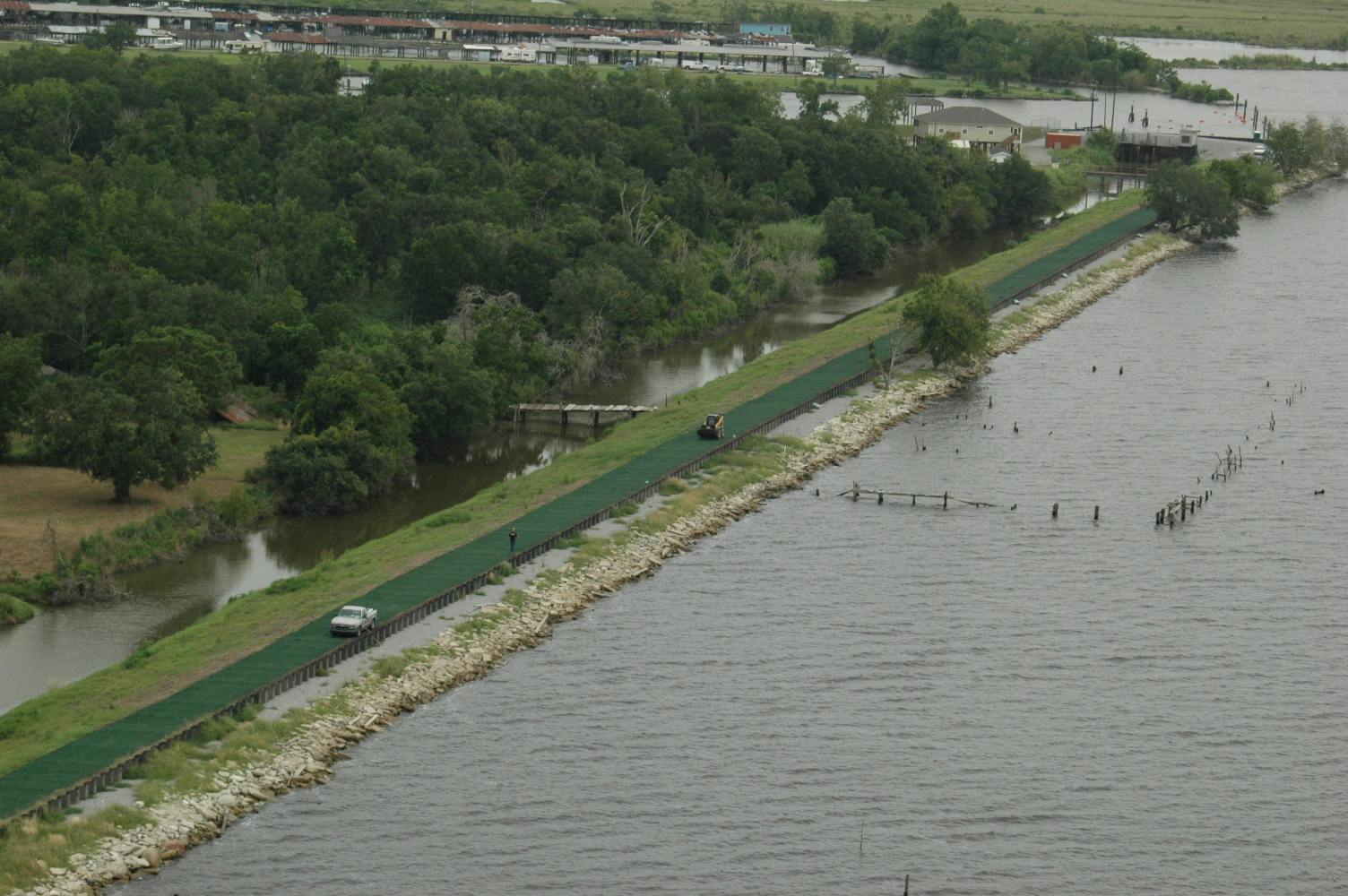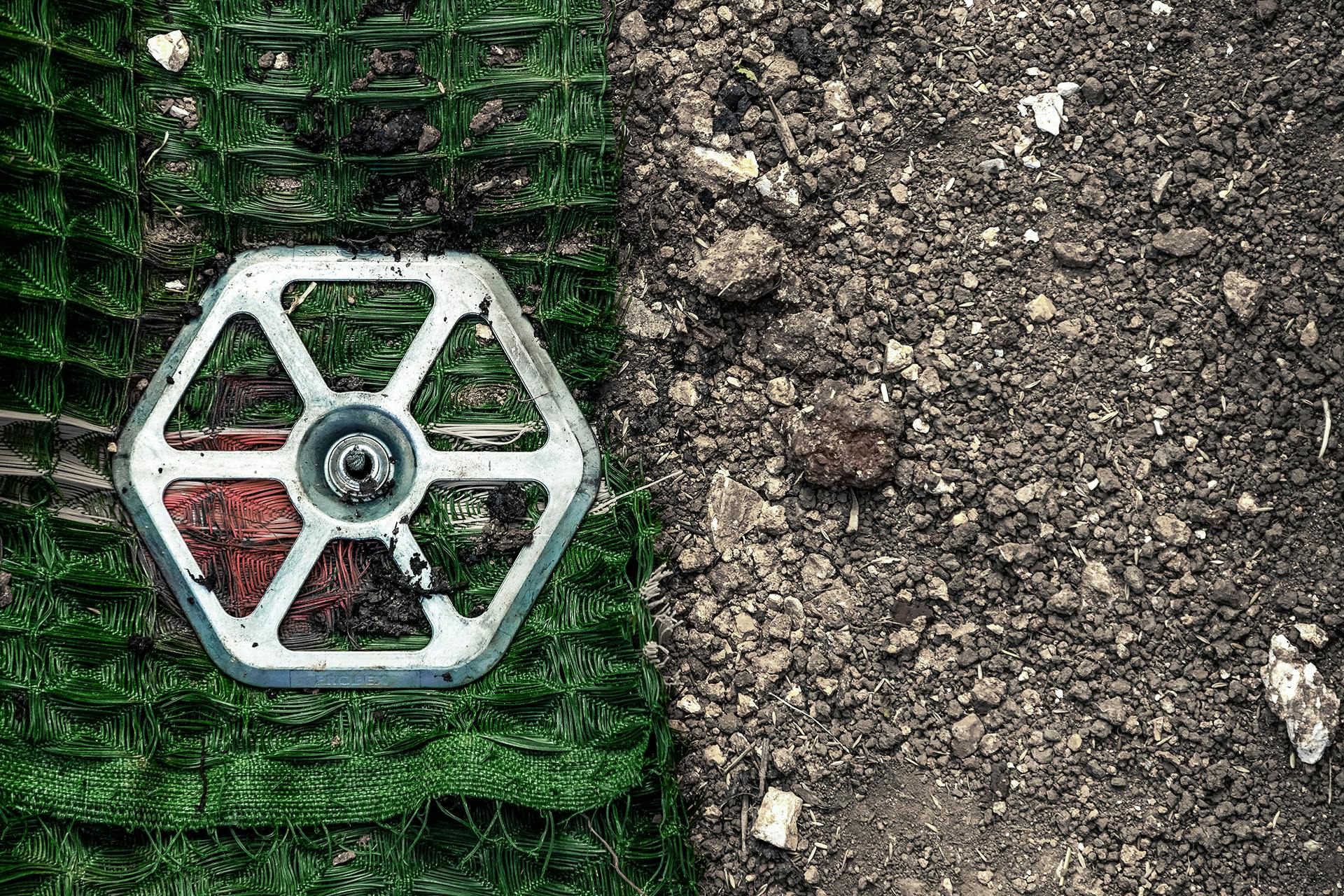
Flexible lining materials in channels and slopes
Rolled erosion control products (RECPs) overview
RECPs are flexible lining materials commonly used for controlling erosion on slopes and in channels. They can be categorized into:
1. Erosion Control Blankets (ECB): Temporary, biodegradable products enhancing vegetation growth with slight hydraulic improvement.
2. Turf Reinforcement Mats (TRM): Permanent, entirely non-degradable materials promoting vegetation and enhancing hydraulic performance.
3. High-Performance Turf Reinforcement Mat (HPTRM): Like TRM but with a minimum tensile strength of 3,000 x 3,000 lb/ft (4,080 x 4,080 kg/m).
4. Engineered Earth Anchoring Systems (EEAS): Combines HPTRM with an Engineered Earth Anchor for better erosion control or slope stabilization.
Selecting the right RECP depends on hydraulic, non-hydraulic, and environmental factors.

Hydraulic considerations
RECPs are ideal when hydraulic stresses in the field exceed those of unfortified vegetation or soil but are less than those requiring hard armoring. The stability threshold analysis involves comparing the shear stress and velocity on the slope or channel to the permissible levels of the chosen lining material.
Short-term testing reveals RECPs can endure 1.5-3 times the hydraulic stresses at a 1-hour flow than a 50-hour flow. A general safety factor for erosion control applications with these stresses is 1.3.
Regarding vegetation, RECPs can improve the hydraulic performance in unvegetated (0-30% vegetation) situations. But with partial (30-70%) or full (70-100%) vegetation, RECPs reinforce the vegetation, greatly enhancing project performance. Non-Hydraulic Considerations While assessing RECPs, one must account for:
Material Composition: The durability and performance of an RECP depend on its components.
Flexibility: Indicates the RECP's ability to maintain contact with the soil, ensuring effective erosion control.
UV Resistance: Vital for all applications, this measures how well an RECP maintains strength after UV exposure.
Tensile Strength: Defines how well an RECP can withstand non-hydraulic stresses, like installation and mechanical loading.
Environmental considerations
Environmental impact should always be evaluated. While biodegradable or natural materials are preferred, more demanding projects may require non-degradable RECPs.
Summary
The increasing adoption of RECPs requires a comprehensive understanding of design considerations. Factors like hydraulic, non-hydraulic, and environmental aspects are crucial.
References
This summary is derived from a detailed paper by the U.S. Army Engineer Research and Development Center (ERDC). Specific references include works by Miller et al., 2012, and the Erosion Control Technology Council, 2008.
Explore more blogs
View allHow to combine engineered earth armoring with greywater treatment
Resilient water management by combining greywater recycling with engineered earth armoring for irrigation, erosion control, and increased property value.
How can geosynthetics help energy transition?
Geosynthetics accelerate agricultural outputs and improve resilience by optimizing water management through enhanced irrigation efficiency and providing structural stability to agricultural infrastructures like dams and reservoirs.
How can geosynthetics accelerate agriculture outputs and improve resilience?
Geosynthetics accelerate agricultural outputs and improve resilience by optimizing water management through enhanced irrigation efficiency and providing structural stability to agricultural infrastructures like dams and reservoirs.